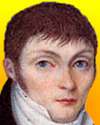
On 18 Sep 1840, Constantine Rafinesque died, a French naturalist, traveller and writer who made extensive travels, including a large area of America, collecting, cataloging and naming huge numbers of plants. He published prolifically with ideas that could be brilliantly insightful, and sometimes careless or wrong.
He is described in a chapter, An Eccentric Naturalist in Science Sketches (1885). It opens as Rafinesque “crossed the Falls of the Ohio and stood on Indiana soil. He came on foot, with a note-book in one hand and a hickory stick in the other, and his capacious pockets were full of wild-flowers, shells, and toads. He wore ‘a long, loose coat of yellow nankeen, stained yellower by the clay of the roads, and variegated by the juices of plants.’ In short, in all respects of dress, manners, and appearance, he would be described by the modern name of ‘tramp.’ Nevertheless, no more remarkable figure has ever appeared in the annals of Indiana or in the annals of science. To me it has always possessed a peculiar interest; and so, for a few moments, I wish to call up before you the figure of Rafinesque, with his yellow nankeen coat, ‘his sharp tanned face, and his bundle of plants, under which a pedler would groan,’ before it recedes into the shadows of oblivion.”
If that has whet your appetite to know more about this interesting character, there is much more in the extract on Constantine Rafinesque to read about his exploits.
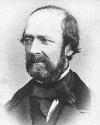
On 18 Sep 1819, Jean Bernard Léon Foucault was born, a French physicist, whose Foucault's Pendulum experimentally proved that the Earth rotates on its axis. Today's book pick is: , by , one of the best science popularizers, tells of the scientist and one of the cleverest experiments in scientific history. Foucault, and his many other discoveries, are little-known now, but his pendulum widely seen in science museums. The book is a fascinating journey through the mind and findings of one of the most important and lesser-known characters in the history of science. Through careful research and lively anecdotes, world-renowned author Amir D. Aczel reveals the astonishing range and breadth of Foucault's discoveries. For, in addition to offering the first unequivocal proof of Earth's rotation, Foucault gave us the modern electric compass and microscope, was a pioneer in photographic technology, and made remarkable deductions about color theory, heat waves, and the speed of light.
It is available from Amazon, typically about (As of earlier time of writing - subject to change.)
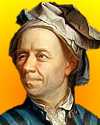 | For since the fabric of the universe is most perfect and the work of a most wise creator, nothing at all takes place in the universe in which some rule of the maximum or minimum does not appear…. |
 | Science gains from it [the pendulum] more than one can expect. With its huge dimensions, the apparatus presents qualities that one would try in vain to communicate by constructing it on a small [scale], no matter how carefully. Already the regularity of its motion promises the most conclusive results. One collects numbers that, compared with the predictions of theory, permit one to appreciate how far the true pendulum approximates or differs from the abstract system called 'the simple pendulum'. |
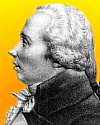 | All the truths of mathematics are linked to each other, and all means of discovering them are equally admissible. |
| Before you look at today's web page, see if you can answer some of these questions about the events that happened on this day. Some of the names are very familiar. Others will likely stump you. Tickle your curiosity with these questions, then check your answers on today's web page. | |
| Births | |
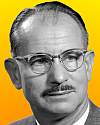 | Edwin McMillan, born 12 Sep 1907, was a chemist who discovered two elements, and helped build the first atom bomb. What two elements did he discover? |
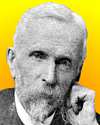 | John Aitken, born 18 Sep 1839, was a Scottish physicist and meteorologist who is remembered for his explanation of a meterological phenomenon based on Aitken nuclei. What are Aitken nuclei - and what do they cause? |
| Deaths | |
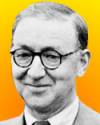 | The English physicist, Sir John Cockcroft (1897-1967) was joint winner with Ernest T.S. Walton of Ireland of the 1951 Nobel Prize for Physics. Together, they built the Cockcroft-Walton generator. What was the function of their generator? |
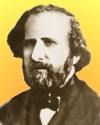 | A French physicist (1819-1896) was the first to measure the speed of light successfully without using astronomical calculations (1849). His apparatus used a narrow beam of light sent between gear teeth on the edge of a rotating wheel. Can you name this scientist? |
| Events | |
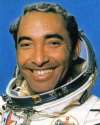 | On 18 Sep of a certain year, Cuban cosmonaut Arnaldo Tamayo-Mendéz became the first person of color and the first Latin American sent into space on board Soyuz 38 (for 188.7 hours), one of a two men comprising the seventh international crew under the Intercosmos programme. Tamayo-Mendéz spent several days aboard the Soviet space laboratory Salyut 6. During which decade did this event occur? |
 | In 1830, the first locomotive built in America raced a horse over a distance of 14-km, but lost due to a boiler leak. What is the name of the first locomotive built in America? |
Fast answers for the previous newsletter for September 17: Bernhard Riemann • white blood cells • concrete operational and formal operational • he invented the negative-positive photographic process - to produce a positive picture of which he was able to make further copies • mercury vapour lamp • Rosetta stone.
 If you enjoy this newsletter, the website, or wish to offer encouragement or ideas, please send feedback by using your mail reader Reply button.
If you enjoy this newsletter, the website, or wish to offer encouragement or ideas, please send feedback by using your mail reader Reply button. Your click on a Facebook, StumbleUpon, or other social button on the site webpages is also a welcome sign of appreciation. Thank you for using them.
© This newsletter is copyright 2020 by todayinsci.com. Please respect the Webmaster's wishes and do not put copies online of the Newsletter — or any Today in Science History webpage. (If you already have done so, please remove them. Thank you.) Offline use in education is encouraged such as a printout on a bulletin board, or projected for classroom viewing. Online, descriptive links to our pages are welcomed, as these will provide a reader with the most recent revisions, additions and/or corrections of a webpage. For any other copyright questions, please contact the Webmaster by using your mail reader Reply button.
--
If you do not want to receive any more newsletters, Unsubscribe
To update your preferences and to unsubscribe visit this link
Executive Real Estate Business Class
-
"It was like a man with wings. It wasn't like anything you'd see on TV or in a monster movie." ...
About the publisher
Search This Blog
Blog Archive
-
▼
2020
(1542)
-
▼
September
(173)
- SCIENCE: Just how big is Everest?
- The Latest News from History News Network
- On This Day for September 30 - Munich Agreement si...
- We are called to return to our foundational values...
- Newsletter for Wednesday 30 September.
- They Killed His Wife And Left Him For Dead – Then ...
- TRAVEL: Telling new truths about America’s histori...
- Make learning fun with Nat Geo Kids magazine! Subs...
- On This Day for September 29 - British mandate in ...
- Newsletter for Tuesday 29 September.
- Special Edition: Dinosaurs come to life like never...
- September 29: On This Day in History
- HISTORY: America's most endangered historic sites
- New This Week on History News Network
- On This Day for September 28 - California “discove...
- Newsletter for Monday 28 September.
- September 28: On This Day in History
- FAMILY: What do I tell my kids about wildfires and...
- On This Day for September 27 - Norman Conquest beg...
- Newsletter for Sunday 27 September.
- September 27: The Rosetta Stone, E=mc² and Fear as...
- The Compass: Indonesia
- On This Day for September 26 - First televised U.S...
- Newsletter for Saturday 26 September.
- September 26: Frances Drake's Circumnavigation, th...
- CORONAVIRUS UPDATE: Is this the end of the office?
- PHOTOGRAPHY: They feed us. Now we see them.
- The assassination of Lord Mountbatten | Enola Holm...
- 39,500-Year-Old Cave Bear Discovered Perfectly Pre...
- On This Day for September 25 - Pacific Ocean sight...
- The Roundup Top Ten for September 25, 2020
- Newsletter for Friday 25 September.
- September 25: Battle of Stamford Bridge, Remote Co...
- ANIMALS: These mighty elephants find peace
- On This Day for September 24 - Federal troops sent...
- Newsletter for Thursday 24 September.
- Global cartels taking control of the world + HPA B...
- September 24: Decline of the Byzantine Empire, Ope...
- YOUR WEEKLY ESCAPE: America's oldest mystery
- SCIENCE: How to cope with a big death toll
- The Latest News from History News Network
- On This Day for September 23 - Neptune observed, J...
- Newsletter for Wednesday 23 September.
- September 23: Nintendo, the Start of Data Processi...
- TRAVEL: How will America’s state parks survive?
- Matching gift opportunity for Sumatran rhinos
- On This Day for September 22 - Solidarity formed, ...
- Newsletter for Tuesday 22 September.
- September 22: Salem Witch Trials, Iraq's Invasion ...
- HISTORY: Who can replace RBG?
- Feed their curiosity! Get Nat Geo Kids magazine fo...
- New This Week on History News Network
- On This Day for September 21 - Joseph Smith's visi...
- Newsletter for Monday 21 September.
- September 21: France, China and a Sheep Shearing R...
- FAMILY: Don’t tell your kids outdated stuff about ...
- On This Day for September 20 - Rome incorporated i...
- Pro-life is not Politics + Vickie Travis's message...
- Newsletter for Sunday 20 September.
- September 20: Attila the Hun, Magellan's Circumnav...
- The Compass: Chile
- Matching gift opportunity for Sumatran rhinos
- On This Day for September 19 - George Washington's...
- Newsletter for Saturday 19 September.
- CORONAVIRUS UPDATE: Young people are spreading the...
- September 19: 1st Country to Grant Women the Right...
- PHOTOGRAPHY: How to make dinos look new (CORRECTED)
- Quick Note: How to Save Videos by Downloading
- PHOTOGRAPHY: How to make dinos look new
- The Mayflower | Medieval spiders | Ancient Egypt f...
- When She Found Out Her Boyfriend Was A Serial Kill...
- The Roundup Top Ten from History News Network
- On This Day for September 18 - Mukden seized by Ja...
- Newsletter for Friday 18 September.
- "Truth Crushes Evil" + We're Winding down + What ...
- YOUR WEEKLY ESCAPE: The country that doesn't exist
- September 18: Great Fire of Moscow, the CIA and El...
- ANIMALS: How U.S. officials stopped the flying squ...
- Two New Podcasts From HISTORY
- Don't miss out: back to school savings for learner...
- On This Day for September 17 - Camp David Accords ...
- Newsletter for Thursday 17 September.
- September 17: Bloodiest Day in the American Civil ...
- SCIENCE: He found part of a one-of-a-kind dinosaur
- SPECIAL REPORT: How the West is primed to burn
- The Latest News from History News Network
- On This Day for September 16 - Mayflower's departu...
- Newsletter for Wednesday 16 September.
- September 16: French Abolish Slavery, Malaysia For...
- TRAVEL: Will slowing down help you get stronger?
- Special Report: How do we end this pandemic?
- On This Day for September 15 - Central Americans g...
- Newsletter for Tuesday 15 September.
- September 15: Darwin Reaches the Galapagos, Penici...
- HISTORY: How the U.S. battled catastrophic wildfir...
- BREAKING NEWS: Possible evidence of life found on ...
- Discover Remarkable Leaders With Nat Geo History M...
- On This Day for September 14 - Mexico City capture...
- New This Week on History News Network
- Newsletter for Monday 14 September.
-
▼
September
(173)
-
Blogroll
-
About
HistoryFact










0 comments:
Post a Comment